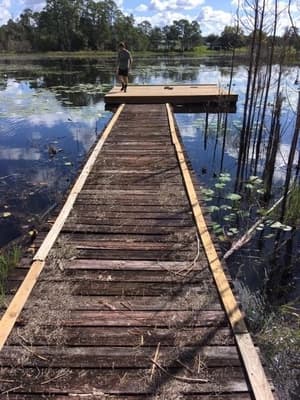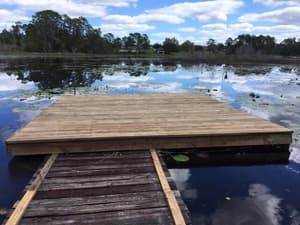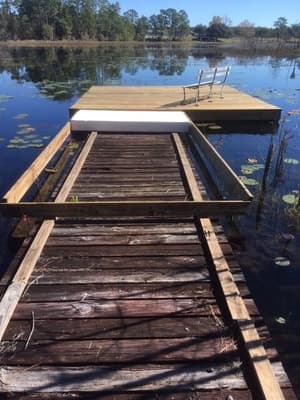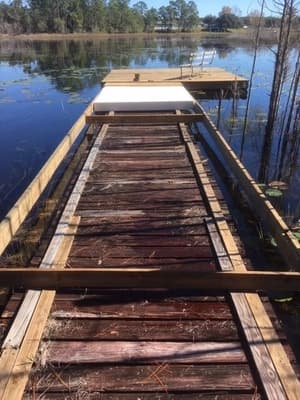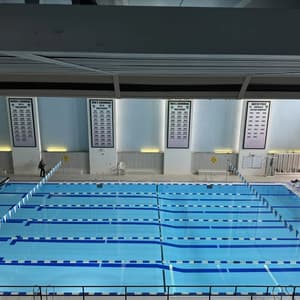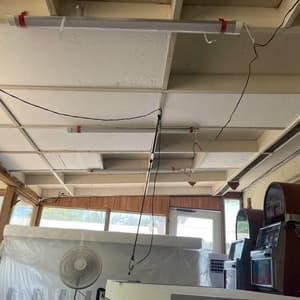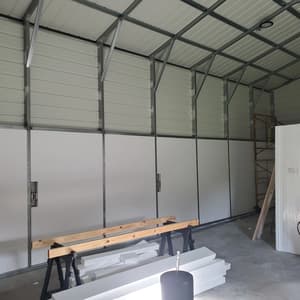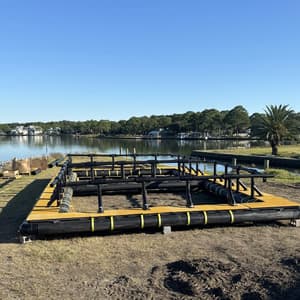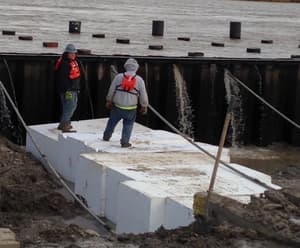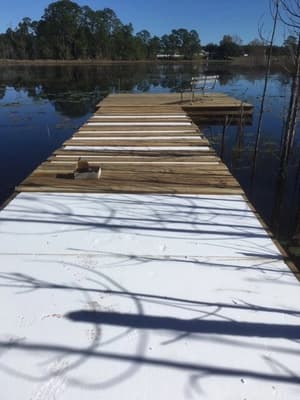
There is more than one way to upgrade an old dock. Our customer in Orlando, Florida decided to overlay his existing floating dock instead of removing and replacing it. He started at the end of the existing dock using .9 lb density EPS blocks 8” x 48” x 96” for flotation and pressure treated 2x8s for framing. He framed over the existing dock attaching the 2x8 cross members so they would fit between the EPS blocks. The dock is approximately 48’ long including the platform at the end. The total flotation provided by the EPS panels is just over 10,000 pounds with the foam remaining half out of the water. Since the existing floats still have some life in them, the new structure should last a very long time.
Unencapsulated EPS floats are used on private ponds and lakes throughout the country for docks and swim platforms. These floats can provide decades of maintenance free use. EPS blocks are also used for floating workstations for performing boat maintenance in the water. A block of EPS 12” x 48” x 96” will float over 900 pounds with half of the block out of the water. That is enough to support 2 men and equipment for most projects. EPS blocks are also custom cut and shaped for other specialty flotation applications.
For docks on larger bodies of water including those controlled by the Corps or Engineers, TVA and other private and public governmental agencies, encapsulated floats are required. These floats range from 7” x 24” x 48” up to 32” x 48” x 96” and come in two different styles. One is called a flange mount float. These floats have pre-drilled holes in the top flange where bolts or lags are run through the flange to connect the float to the dock framing. The other style is called a “top mount float” where lag screws are inserted downward through the dock framing member into a reinforced perimeter surface of the float. Both styles are extremely durable and come with warranties. There are specific applications where one style may be beneficial over the other.
